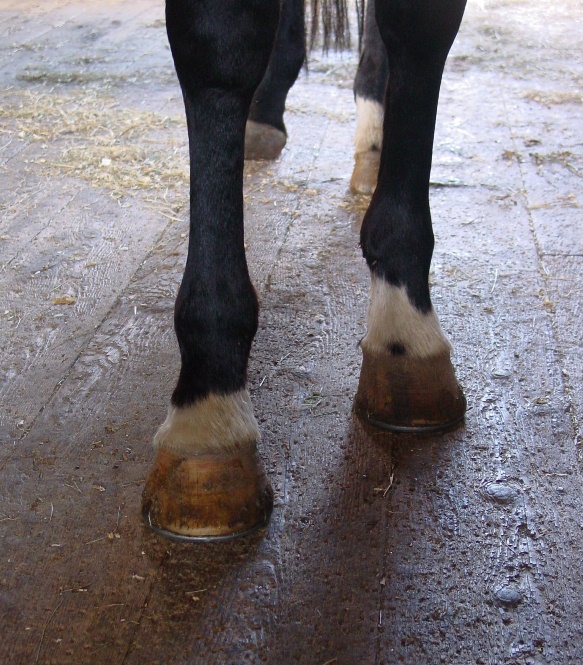Calcium and Phosphorus in Horse Diets

Horses are more likely to suffer from a lack of calcium (Ca) and phosphorus (P) than of any other minerals. Considering the detrimental effect on bone development that a deficiency of these two minerals can have, every horse owner should investigate where their horse’s diet is at in regards to them.
One of the first things any animal science student learns in their Animal Nutrition 101 course is that an animal must always supply calcium in a higher amount than phosphorus, no matter what the species. The reason for this is that phosphorus will bind up calcium in the animal, making calcium unavailable for use in bones, teeth, and other areas it is needed for. If there is more phosphorus than calcium available to the horse, then the phosphorus will start to pull calcium away from wherever in the body it can, including the all-important bone structure!
The reverse situation has very little in the way of detrimental effects, however. As long as there is more calcium than phosphorus, there is very little risk of getting in to a calcium toxicity situation. In horses, the ideal ratio is to have between 1.2:1 and 2:1 Ca:P. Studies have shown up to a 6:1 Ca:P ratio not having an ill effect on horses.
One other note of interest in regards to calcium: it is also essential for proper tubule formation and cell attachment in the hoof wall of the horse. These parts of the hoof wall provide resiliency to the hoof and attach the wall to the sole of the foot, and inadequate calcium or poor calcium-to-phosphorus ratios can cause brittle hooves or tenderness on one or more feet. Proper balance of calcium and the addition of protein to horse rations can help produce strong hooves with well-defined tubules.
